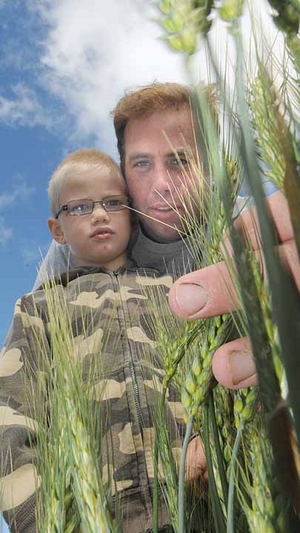* Dreyfus taps bond markets twice in 12 months
* Seen focusing on agribusiness after energy exit
* Says asset base rose nearly 60 pct since 2010
By Emma Farge and Tom Miles
GENEVA, July 26 (Reuters) - Trading giant Louis Dreyfus plans to invest in assets ranging from orange groves to sugar refiners, it said in the first glimpse of its strategy following the departure of its long-serving CEO in June.
Privately-owned Louis Dreyfus outlined its plans in a prospectus seen by Reuters as the firm seeks to raise 400 million euros ($529.4 million) via a five-year bond issue.
The bond is the firm's second in less than a year as it seeks to expand its global portfolio of fixed assets which it said amounted to $3.7 billion at the end of last year, up nearly 60 percent from 2010.
"The Group intends to exploit opportunities for building and/or acquiring assets all along the value chain, both upstream and downstream, ranging from production assets such as orange groves through processing assets," the company said, mentioning oilseed crushing plants and sugar refineries specifically.
"This sourcing and processing asset expansion will be supported by targeted acquisitions and expansion on the logistics and infrastructure side, for example, by investing in deep-sea port terminals and storage facilities in key sources and destinations," it added.
The firm had entered an agreement to build a port terminal for agriculturalcommodities in the Black Sea region, it said, without elaborating or giving details.
Dreyfus is the "D" of the so-called ABCD majors that dominate trade in agricultural products, a quartet that also comprises Archer Daniels Midland, Bunge and Cargill. Last year it said it aimed to increase investments in the five years from 2012 by 40 percent over 2006-2011.
The prospectus said that expansion would focus on regions where demand is high such as China, India and Africa as well as key sourcing areas such as Indonesia and the Black Sea.
Louis Dreyfus, a 160-year-old company with French roots and trading operations in Switzerland, agreed to buy Dutch-based dairy trading group Ecoval as well as Imperial Sugar Co last year.
It said in the prospectus it would also consider expanding into new commodities, including further development in the dairy industry. It was also continuing to invest to meet growing demand for sustainable and traceable coffee.
It also plans to develop a network of feed mills, having begun operating three mills in China in recent joint ventures.
The firm plans to use its presence in China to beef up its metals merchandising business, while expanding its logistics in source countries such as Peru , Bolivia, Zambia and Namibia.
RESHUFFLE
Investors have been eager for news on the firm's strategy following changes to its leadership, with the departure of Serge Schoen in June who oversaw a tripling of turnover and record profits during his eight-year reign.
Margarita Louis-Dreyfus, the widow of former head Robert Louis-Dreyfus, has also increased her stake since late last year via Akira Trust to 65.1 percent from about 50 percent a few years ago.
The expansion plans suggests the group will likely focus on building scale further in its core agribusiness following the sale of its energy business last year, allowing it to better compete with top rivals like Glencore and Cargill.
The firm gave no indication on whether it would pursue a public share offering to fund acquisitions. It has already increased its debt funding, with net debt rising to $2.8 billion at the end of 2012 from $2.4 billion a year earlier.
A breakdown of its financial results over the past three years showed that the group was generating a rising portion of sales from emerging markets, with 40 percent of total revenues in Asia last year.
But Louis Dreyfus said it was also facing growing competition as some developing countries relaxed entry barriers to new participants, enabling the firm's own customers to compete by sourcing products directly.
"Increased competition may reduce the growth in customer base, reduce the profit margin and the market share that the Group currently has, and result in higher selling and marketing expenses," the company said.
Original Article Here









.jpg)

.jpg)
.jpg)









